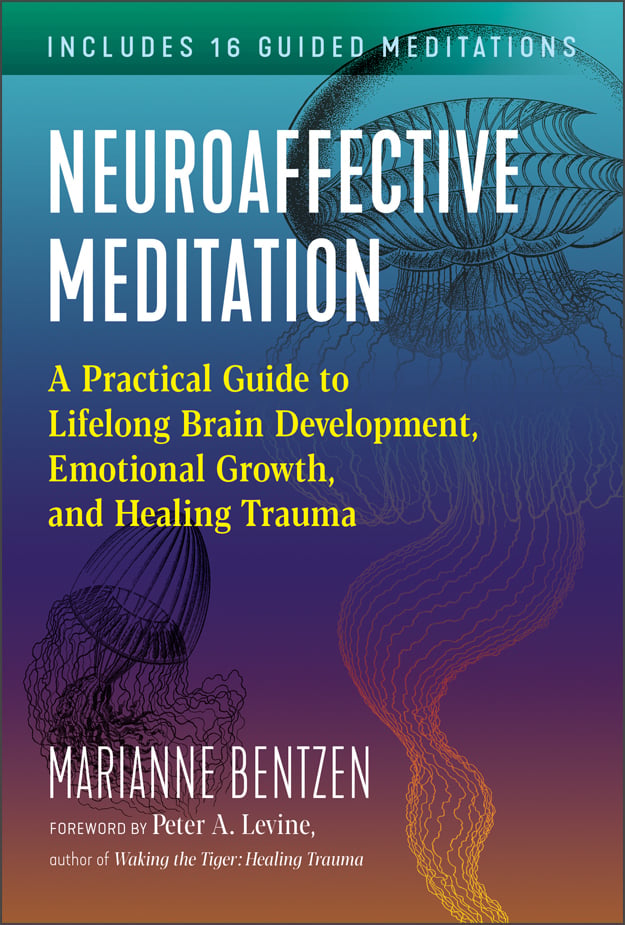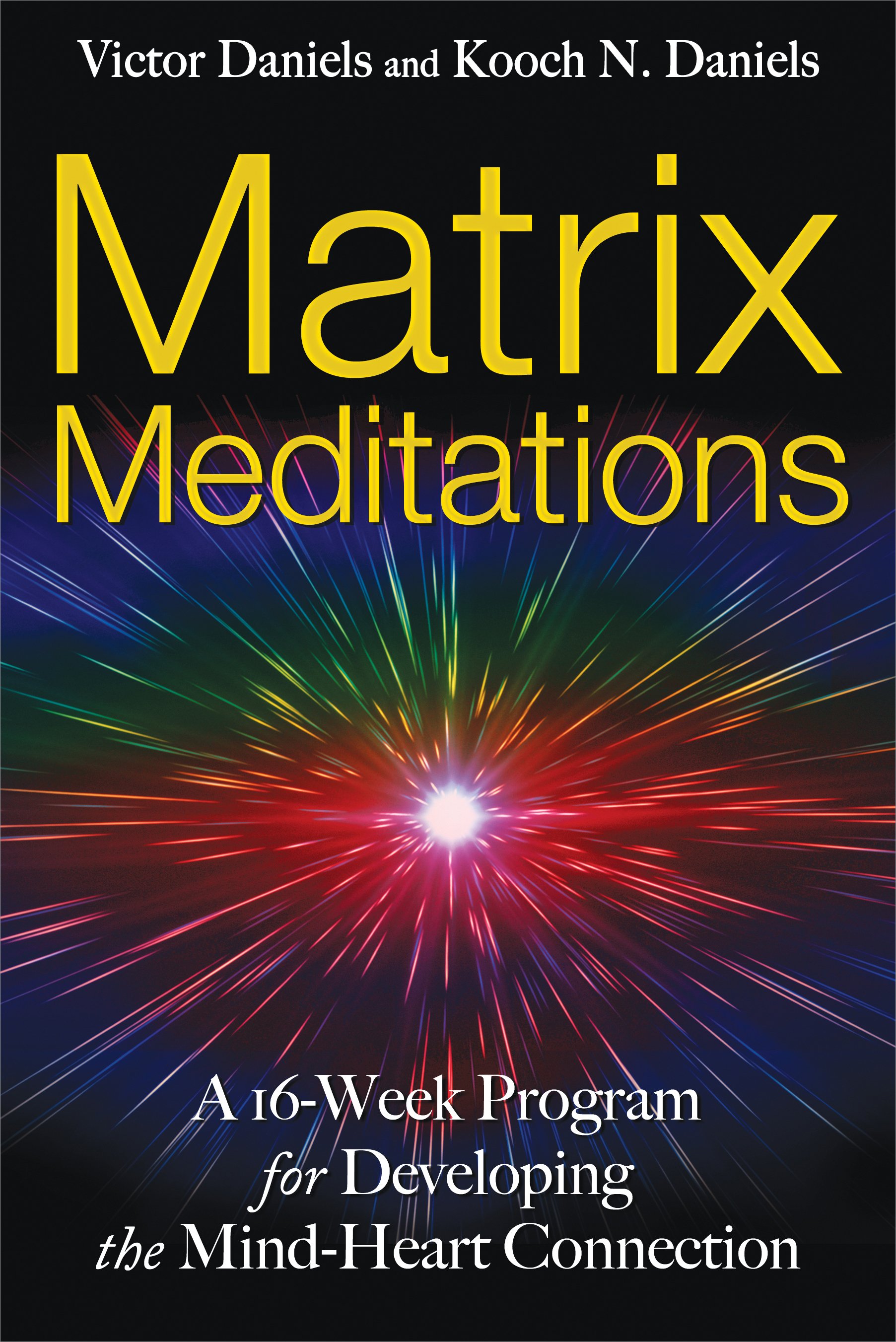Relaxing into Meditation
by Marianne Bentzen, author of Neuroaffective Meditation: A Practical Guide to Lifelong Brain Development, Emotional Growth, and Healing Trauma
Modern psychotherapy, meditation practice, and developmental psychology have three rather different perspectives on what makes a whole human being. In many psychotherapy systems and in meditative practices, the basic assumption is that human beings have a preexisting inner wholeness and goodness, and our task is to uncover these qualities. To do this, much of psychotherapy focuses on working through specific traumatic experiences. The eminent psychiatrist and researcher Daniel Stern pointed out that clients as well as therapists tend to look for the specific traumatic experiences that shape our self-narratives, rather than acknowledging the thousands of daily interactions that have created the very way that we perceive the world and form the building blocks of every event. So how do we develop an approach to personal development and meditation that builds maturity, that builds our ability to live and act responsibly in the world? How do we develop our capacity to go further in our personal and professional relationships?
In meditative practices, the pathway to uncover the inner jewel, the inner wholeness, is first to discover and stabilize a kind, inner witnessing presence that is more and more impersonal, and thus increasingly separate from pleasurable as well as painful experiences. This awareness is generally described as being mirror-like. Practicing such a state supports mental clarity, and it slowly reduces an uncomfortable tendency in our brain function. When we aren’t engaged in a specific task, our default mode network activates, and we find our minds wandering in low-level personal rumination. The mirror-like witnessing allows this process to relax and open the door to deeper presence—eventually. On and off.
Developing this inner attitude is not as easy as it sounds. When we are not personally engaged, it is easy to drift into a state of indifference or emotional numbness, which is definitely not the idea. To counter that tendency, we need to cultivate the attitude of kindness, tenderness, or gentleness in our witnessing practice. This helps bridge the gap between the meditative practice and everyday life. Mindfulness and meditation have been gaining wide popularity for several decades, and it is easy to use it as a form of escape from life rather than a way to develop wisdom in our engagement. The integral philosopher Ken Wilber points out that personal emotional maturation is a different process than transpersonal or spiritual development. As Wilber says, for a balanced development, we need to undertake three great tasks: “Grow up (personal maturity), wake up (spiritual development) and clean up (your life, health, home and relationships in general).”
There is a small but important distinction here. Many meditative practices and some psychotherapy systems hold that all our resources, such as the ability to love, are basically present, and we just need to discover or uncover them. Neuroaffective developmental psychology completely agrees to the concept of a basic human capacity for goodness and empathy, but it also stresses the importance of developing the millions of personal and interpersonal skills needed to be able to feel and live this deep essence in our relationships and our world.
To mention just one example: Developing an emotional and empathic meditative presence is very different from a purely cognitive or mental meditative witnessing. The former requires a healthy emotional development at the level of a seven- or eight-year-old child, or higher, where we begin to be able to look at feelings and behaviors with a clearheaded empathic kindness that comforts and faces reality at the same time. In psychology, the term for this empathic clarity is mentalization. This level of maturity is not as common or as stable as we might wish.
True responsibility grows out of care, and care is an ancient motivation system that grows out of the desire to hold and nurture our young. By nature, our sense of responsibility is thus connected to our sense of belonging and of holding. Our sense of wholeness and our responsibility in the world grow as we discover our fields of belonging and discover how to hold them and be held by them. Meditation can offer a path on this journey of discovery whenever we approach it with curiosity, courage, and a willingness to be touched. When we lose touch with those attitudes, meditative methods can actually make this caring responsibility more difficult.
Our Deeper Music Is Not Tame
Despite the fact that meditative practices and many psychotherapies tend to start with the body, the deeper music of the somatic and autonomic systems is frequently overlooked in meditating, as well as in awareness instructions that work with “just” paying deep attention. Going deeper means reconnecting with your most basic inner space on its terms—in other words, surfing your spontaneous autonomic arousal shifts and experience of pleasure and/or discomfort. Everything influences this level. How you pay attention to it—your prefrontal attention—influences it.
For a moment, imagine this part of you as a kind of wild and wordless animal that lives inside of you. If the way you pay attention to it creates discomfort, it responds with restlessness, contraction, or passivity. If you relate to animals in your daily life, particularly if they are wild, feral, or just not very tame, or if you work with very wounded adults or children, you will probably have noticed that they may respond to focused attention as if it is a threat, a signal of a possible attack. Less obviously, your own autonomic nervous system may respond to your focused attention in the same way. A relaxed, unfocused form of attention is less likely to trigger this response.
In the following gentle neuroaffective sample meditation I invite you to drop into such a less focused, more global and relaxed attention, a form of attention that is designed to not do anything. Doing nothing is often hard for us Westerners, because our socialization and schooling teach us a package deal: Pay attention, control our actions, and sit still. From age of two and up, more and more emphasis is placed on these skills. This means that our attention is usually trained with the intention to act or to control impulses. If you long to drop deeper into meditation or into your aliveness, the first step is to notice this small contraction in your awareness as you focus.
Take a moment to do that now . . .
Now, do you remember how it feels to be awake when you are just waking up in the morning? In the beginning, you are not very awake. Then you wake up some more. At some point in time, you are awake enough that your attention goes to a project, such as getting up and going to the bathroom or drinking tea or coffee. . . . Somewhere in the middle, between very sleepy and awake enough to have a project, can you remember the feeling of an inner space like that? This—maybe tiny—moment of inner space, this moment of transition, is a good starting point for the kind of attention we are aiming for. My spiritual teacher Jes Bertelsen has a simple and lovely way of describing this. He says, “We all know how to fall asleep. What we’re learning here is how to fall awake.”
When we begin to try to fall awake, we may discover that it is hard work, the work of unlearning the way we usually do things. We begin with focusing on the task, so we are literally working to relax. The inner whispered dialogue might go something like this: “Okay, I will now relax and pay careful attention at the same time. This is really hard. No, wait, it’s not supposed to be hard! I have to concentrate on relaxing, I have to relax, I have to . . . .” For many people it seems to be easier to relax first, letting our mind be distracted and fuzzy, and then asking for a bit of attention—if we remember.
Another trick that is taught in many schools of meditation is to honor the moment when we discover that we are distracted—during that second we are fully in the present, and in the next moment we may be busy again, getting upset with ourselves about distractions, trying to get better control of our attention, and so on. I have found that this mental turbulence can be reduced by paying more attention to transitions in activity. As anyone who works with children will know, transitions are actually not easy—they require large shifts in our neural networks, and it takes a lot of practice to shift attention fully from one activity to another. At the same time, transitions are always an essential part of integration.
A Meditation of Transition
Every time you sit or stand or lie down to meditate, it is useful to begin with noticing what your body feels like and wants at that moment—not just to observe it but to follow some of your somatic impulses. Usually they are very simple. Here is a version of a meditative guiding for that. As you read through the guiding, feel free to take a bit of time to quietly explore the feeling in each instruction. No hurry. A lovely anecdote out of Africa has it that when we move quickly, we leave our soul behind. Souls move at a gracious pace. After hurrying, we must rest so our soul has time to catch up.
Transitioning into Meditation with Yawning, Touch, and Movement
Guided Meditation
Find a comfortable position sitting on a chair or on the floor or, if this works better for you, lying down, standing, or walking slowly.
Give yourself some time and space now . . . close your eyes and yawn . . . and rub your face.
Notice if your feet want to be rubbed, too. And notice if your shoulders have kind of crawled upward. If they have, help them by lifting them as high as you can, and then, on the next exhale, relax them . . . and yawn.
We have no goal right now, so if a part of your body wants to stretch, go with that, and if it just wants to keep moving in some way, explore that. If yawns keep coming, keep yawning.
Yawning will often make your eyes and nose water. If you need to blow your nose, blow your nose.
When you exhale, particularly if you have just had a nice yawn . . . but actually anytime you exhale, like right now . . . just see if you can relax into it. . . . Don’t worry about the in-breath right now. Just notice how your out-breath feels . . . it’s a little bit different each time.
As you drop more deeply into that, other body impulses will show up. . . . Let your awareness follow those . . . perhaps your face will want to be rubbed again or you will want to blow your nose again . . . perhaps there is an impulse to rock back and forth or move a little bit.
You are dropping into an attitude of discovering, as you breathe one breath after another, what your body asks for in this moment . . . and as you drop into that . . . sometimes a drifting quality emerges. It’s the mind relaxing. Just let it. Just keep discovering that next exhale, the one that’s happening right now.
How does it feel? Where do you notice it in your body?
Every exhale is a small invitation from life. An invitation to relax, to surrender.
It’s also a game. It’s a game that takes us beyond something that we all started to learn when we were two years old. We all learned to focus on something and to control our focus at the same time.
We’ve all learned that attention means effort.
Now we are going to play with letting go of some of that effort. Each breath invites you to have another kind of attention, a light and floppy kind of attention . . . perhaps a melting kind of attention . . . or a floating kind of attention. We’re not used to it, so after a while we go back to what we are used to. We start efforting and focusing.
When that happens, just take a moment to stretch again . . . or move or yawn . . . or rub a part of your body that needs rubbing . . . until you are drawn to feel a few exhales again . . . just resting in them.
If you want to take one more step in playing with this . . . you can open your eyes and look at the floor or the flowers or something in your surroundings that catches your gaze . . . and keep dropping toward relaxed, effortless, floppy attention.
Just playing with relaxing, surrendering into your out-breath, while you are looking at the floor. And if you like, you can also close your eyes again so that you gently shift between open and closed eyes. When your eyes are open, softly look around . . . still with the surrender, with the relaxation in each out-breath.
So, how does it feel right now to exhale and relax into your surroundings?
It can be anything . . . pleasant or unpleasant. Maybe you feel impatient or you need to pee . . . or it can feel wonderful and relaxing . . . or many other things.
And now it’s time to transition. This usually creates a flurry of inner reorganization, but this time, just keep relaxing with it and notice how your system by itself begins to prepare for going about your next task or activity. Play with shifting your attention between this deep inner ease and the spontaneous movement outward.
Give yourself time to come out in a way where you don’t lose your inner space. This likely involves shifting a few times between more inward and more outward attention, as you engage more and more with your next activity.
As you come out of the meditation and go about your day, see if you can—once in a while—revisit this relaxed state that you have been exploring.
 |
 |
 |
 |



